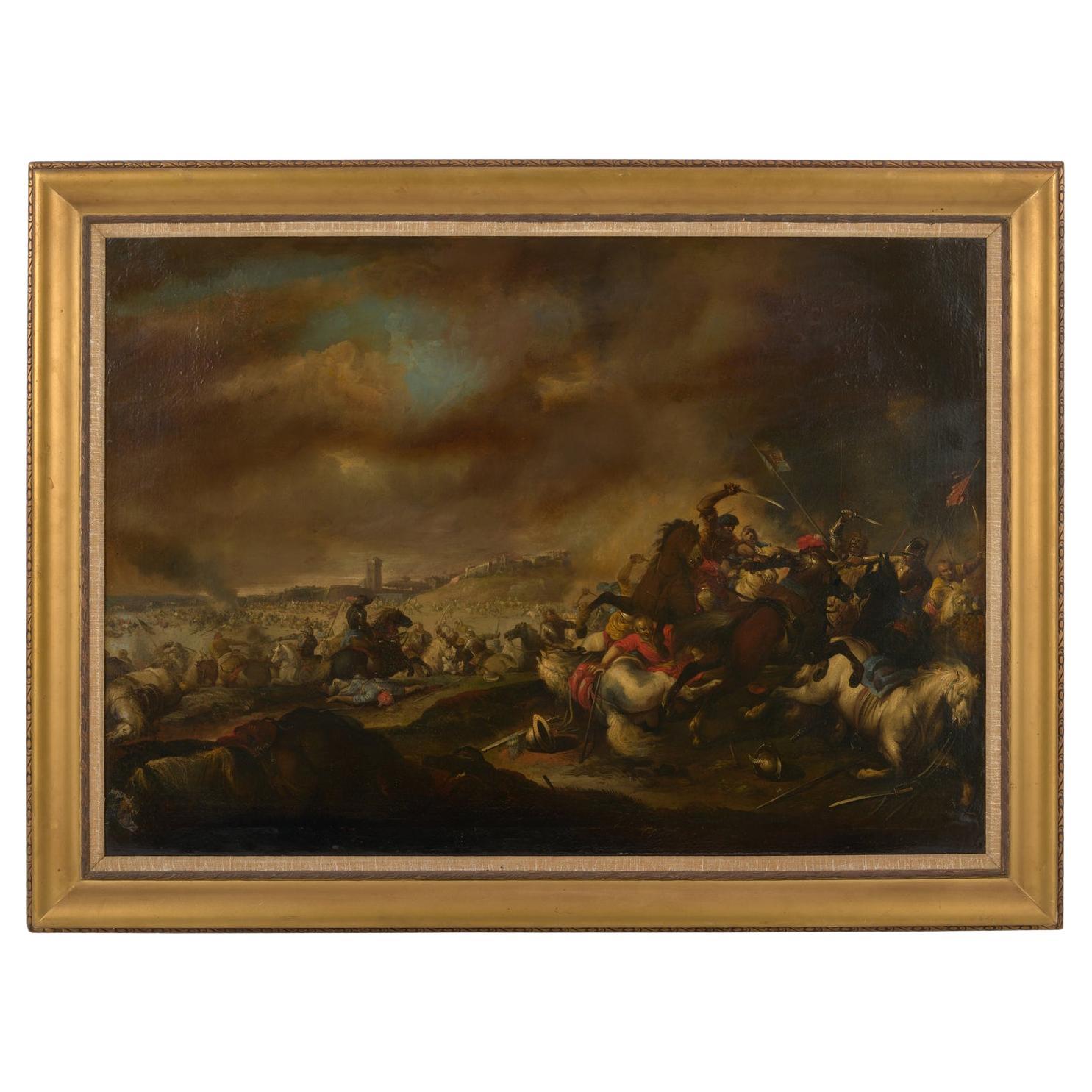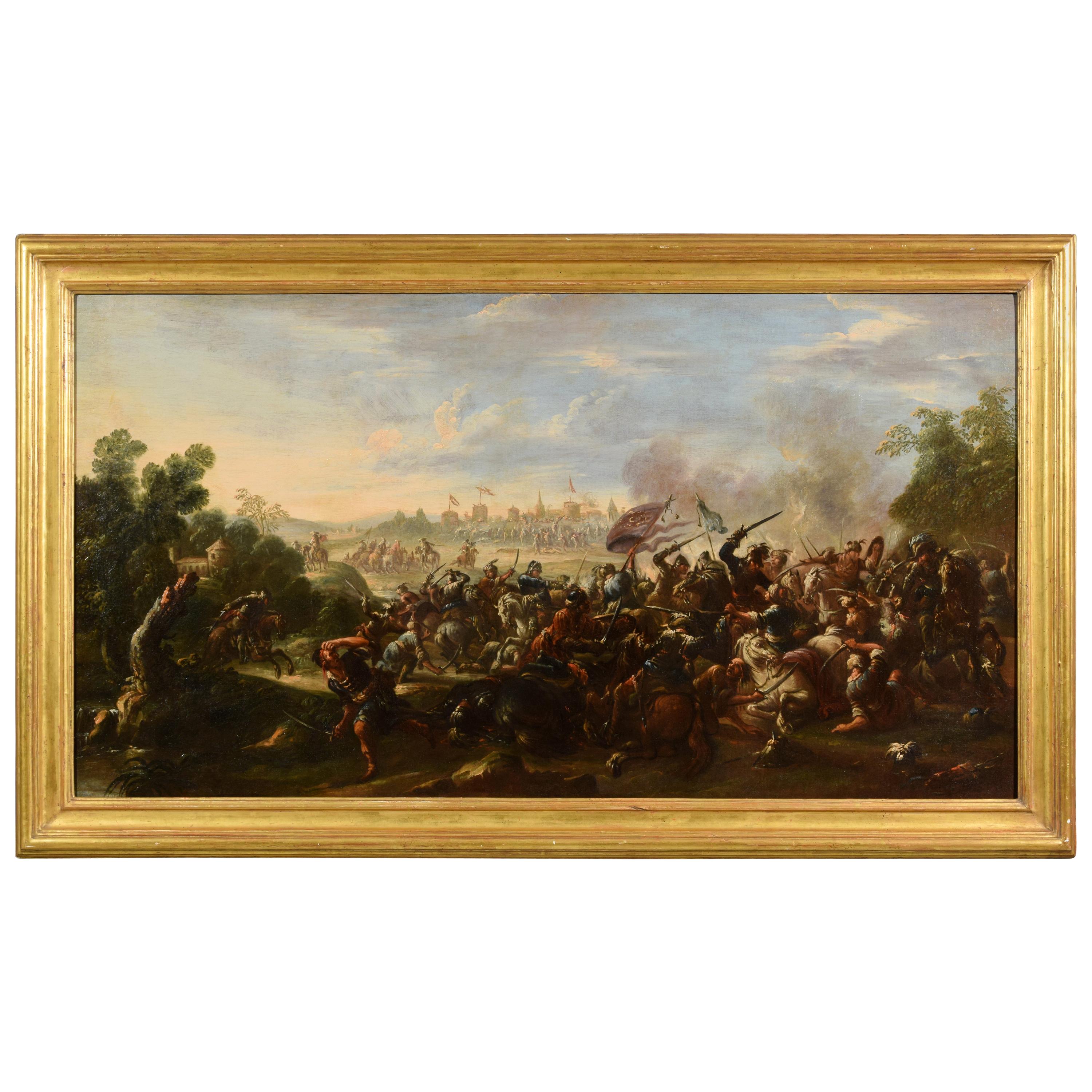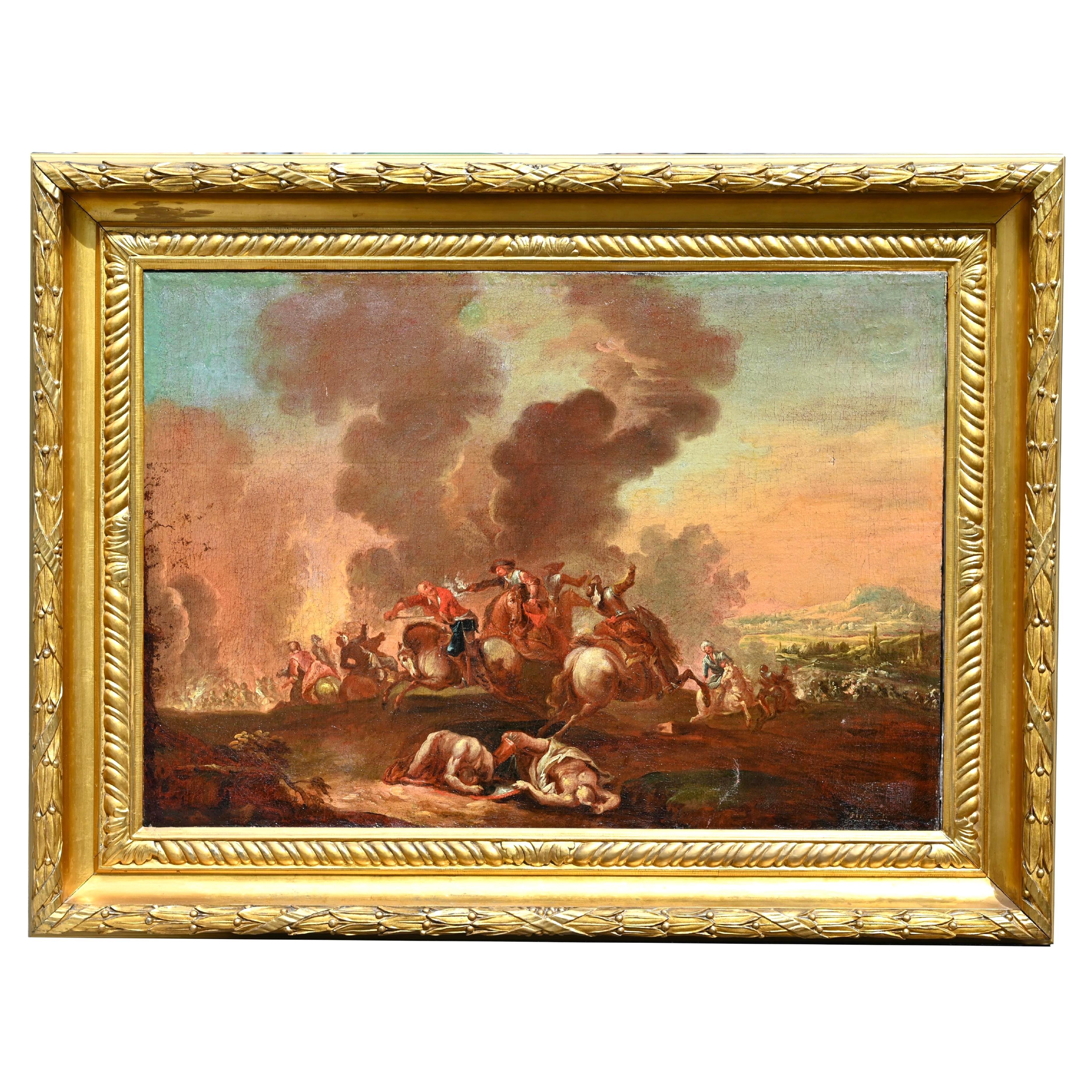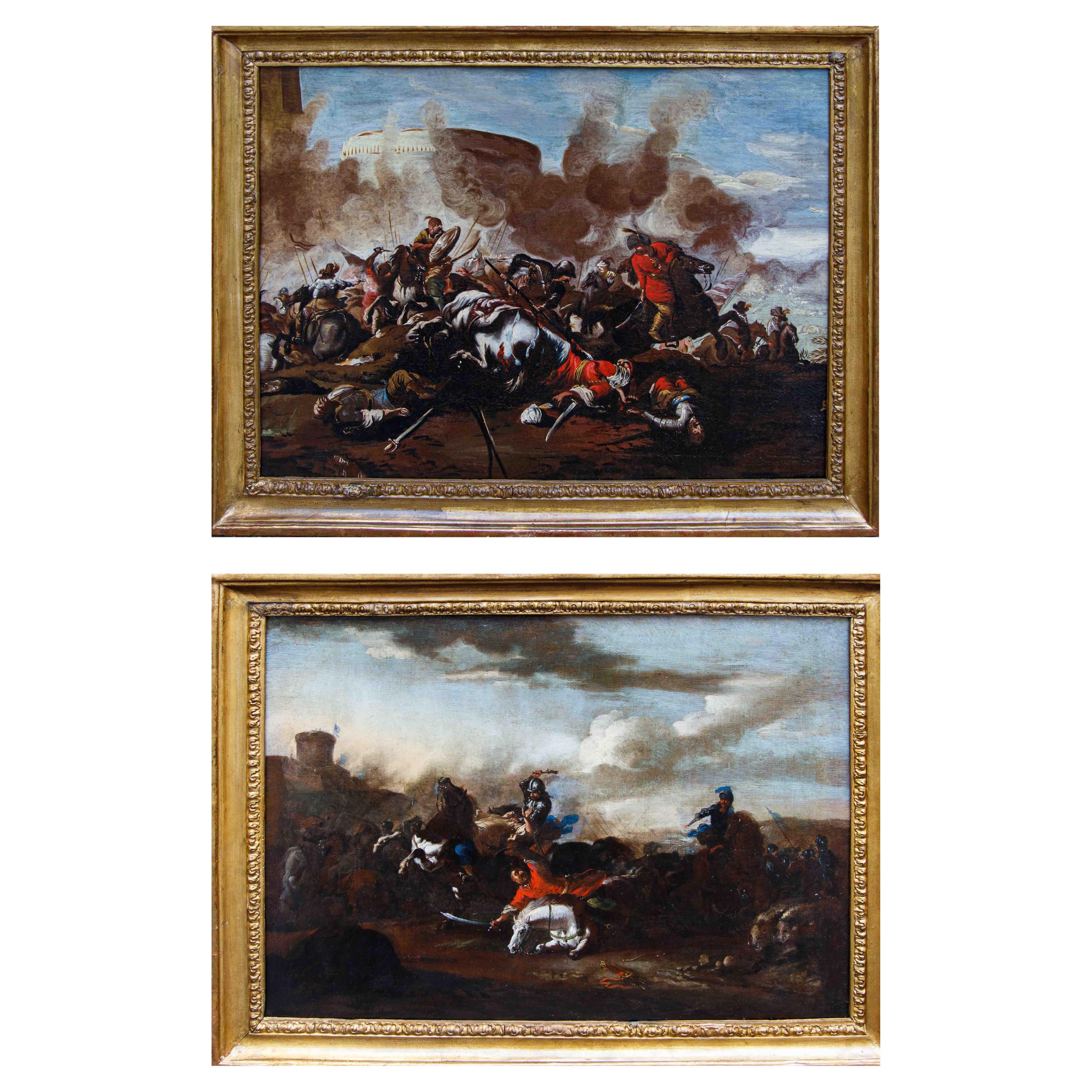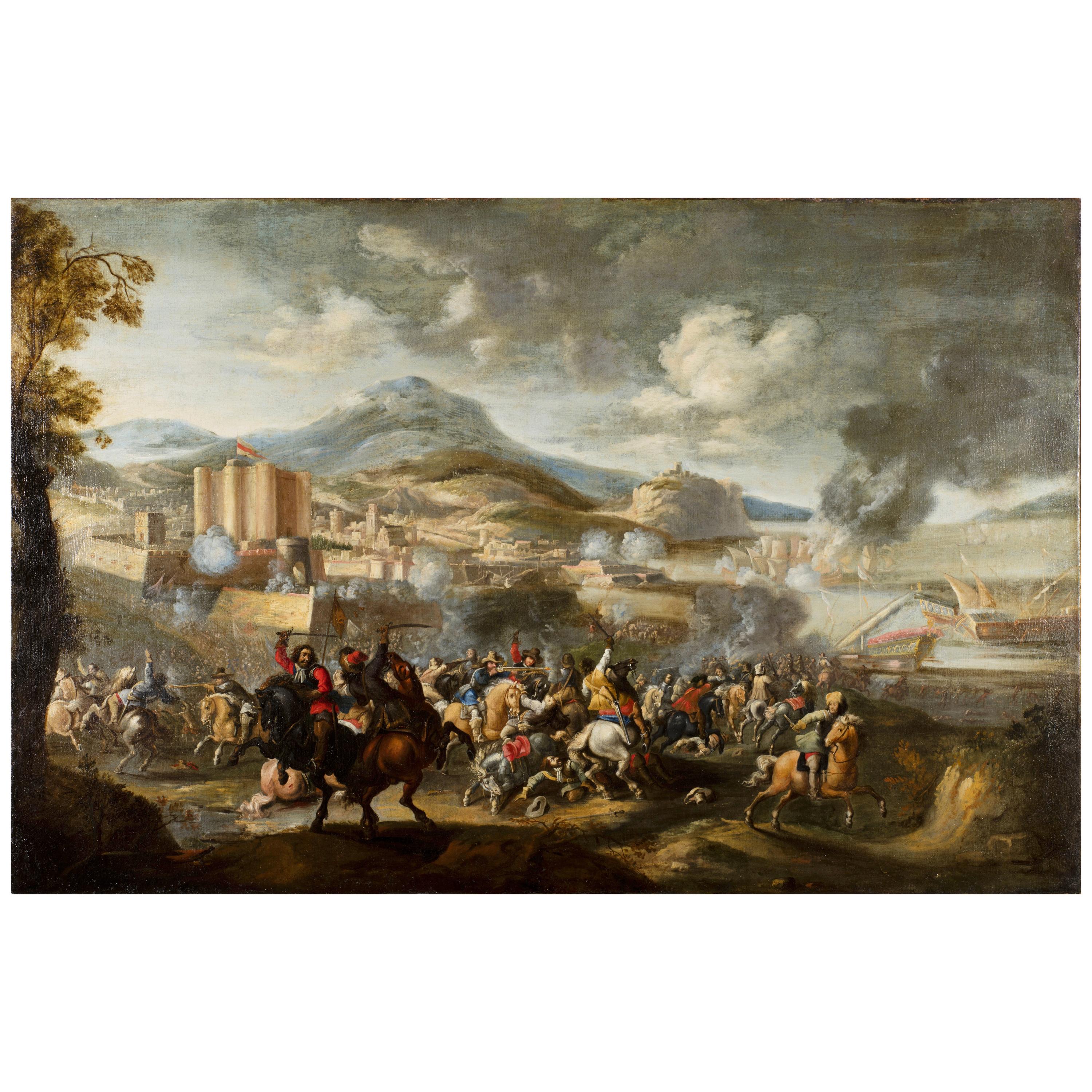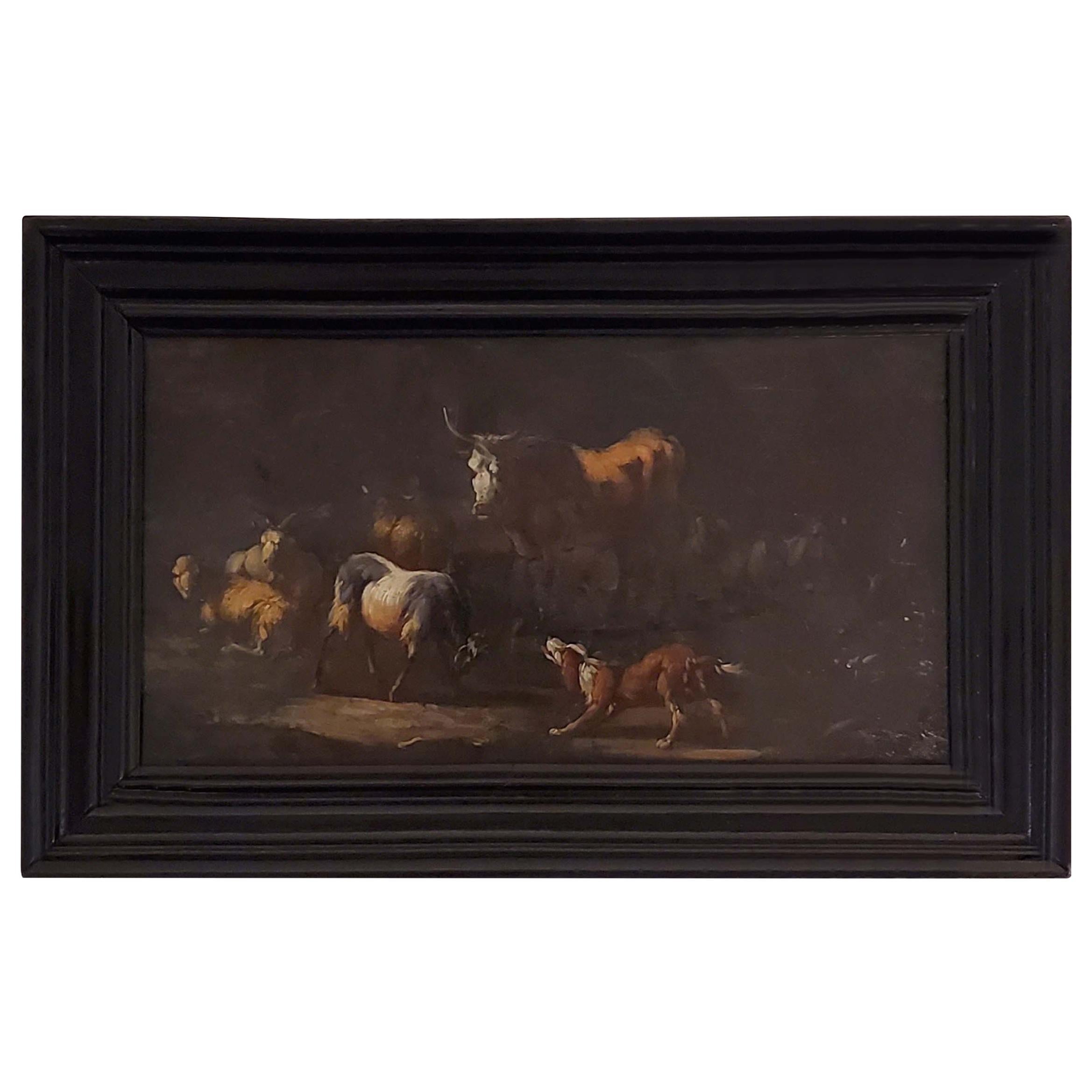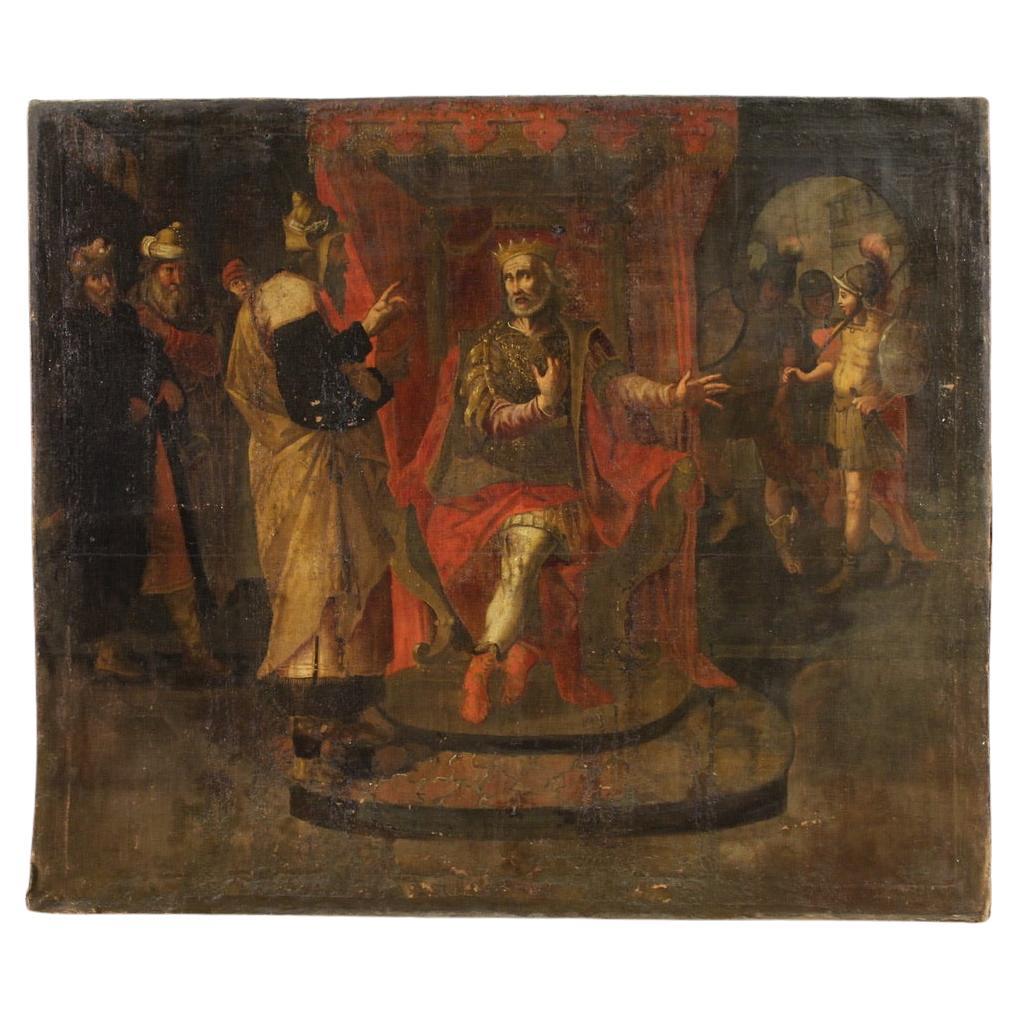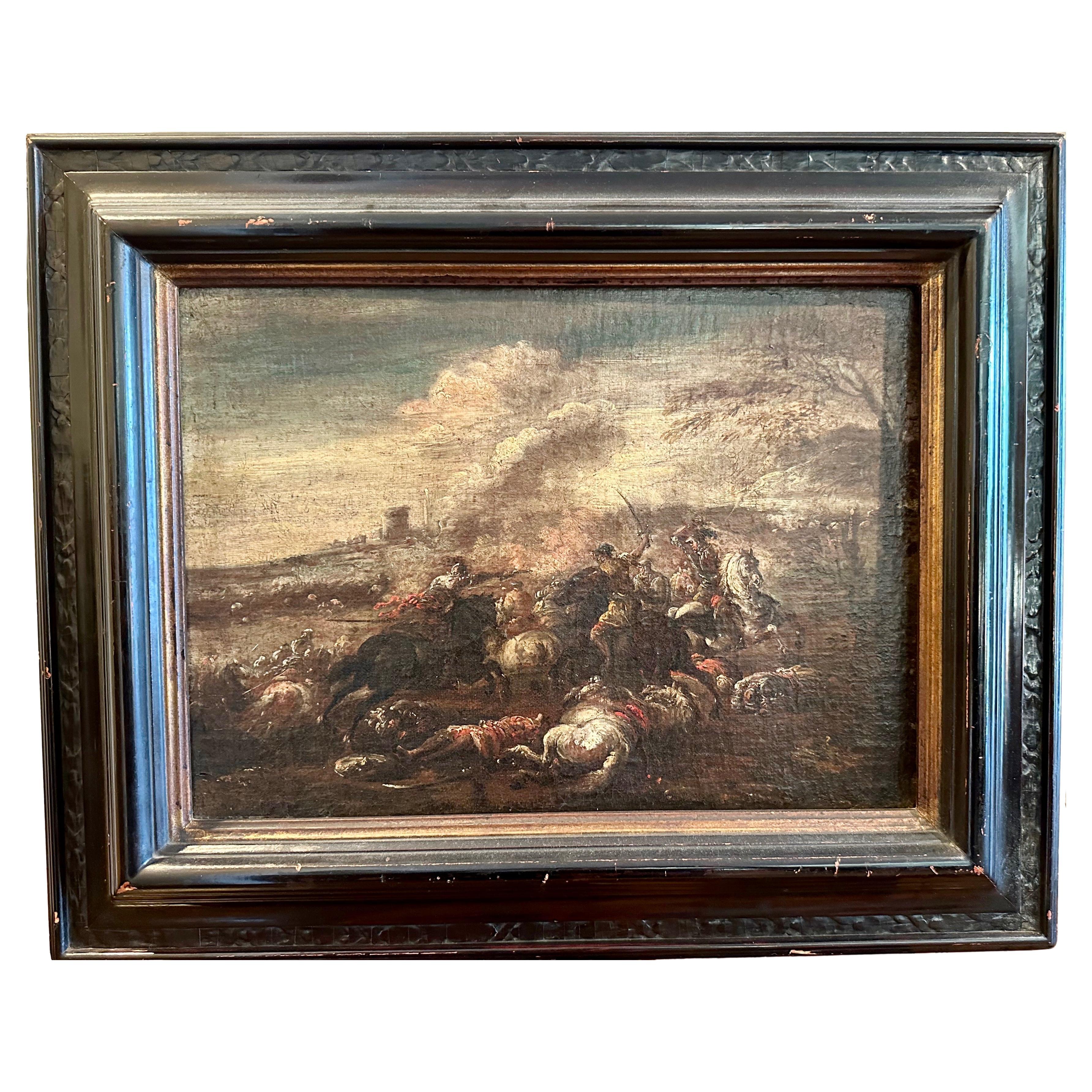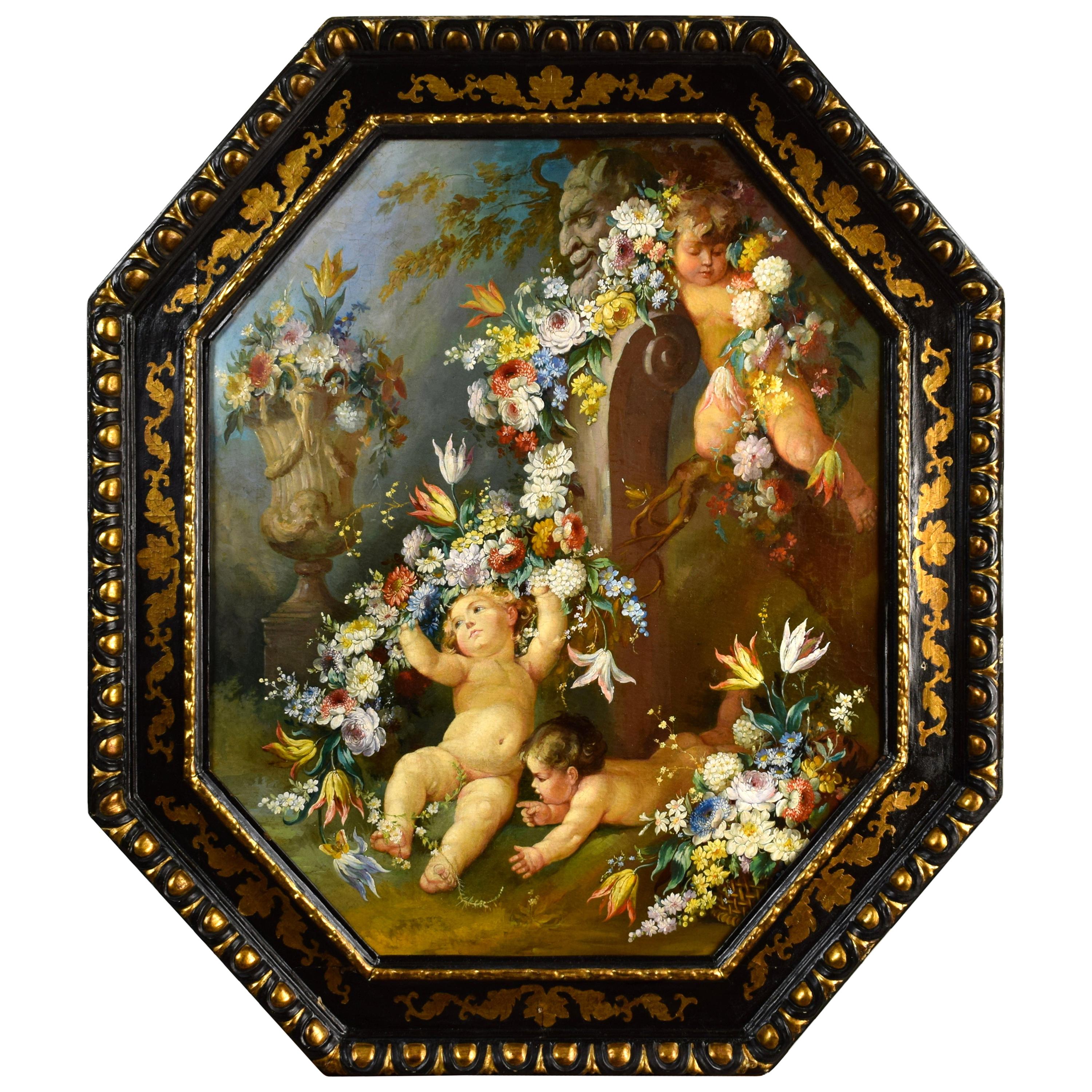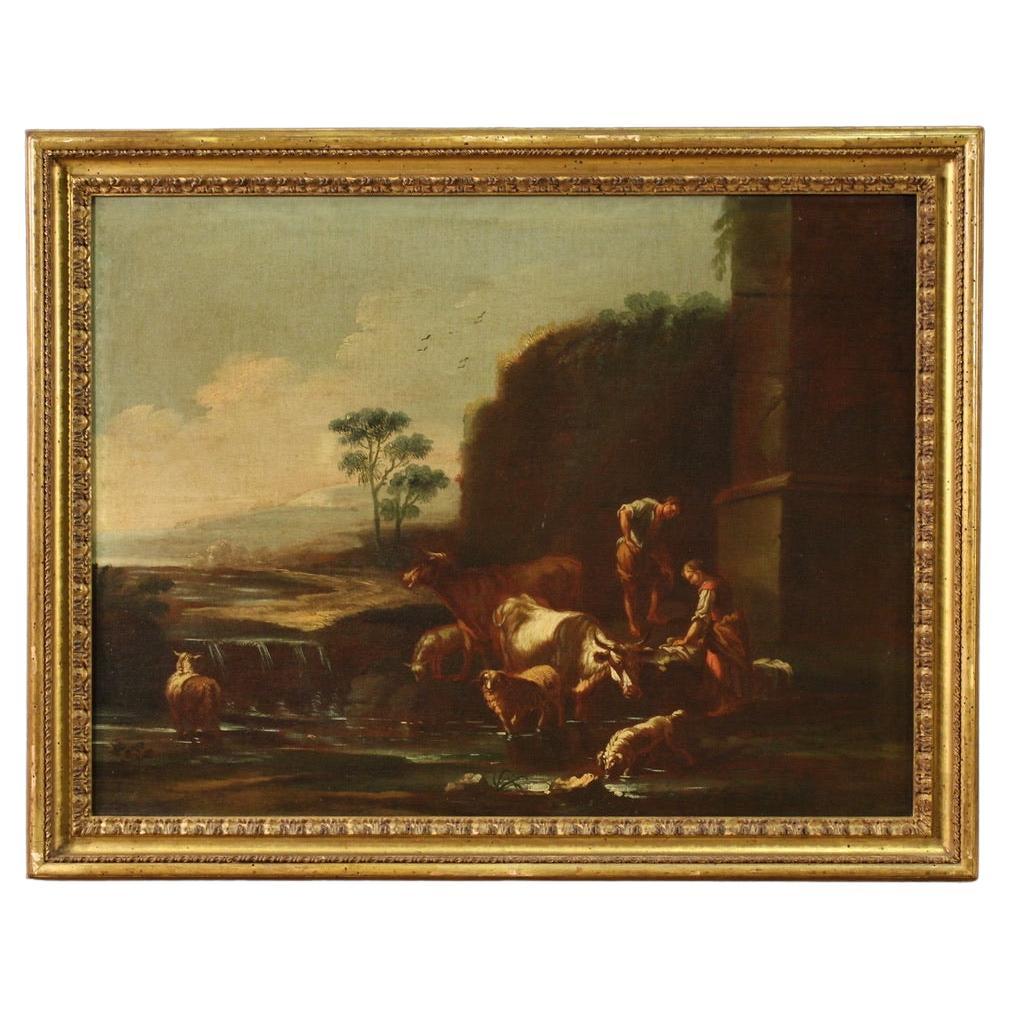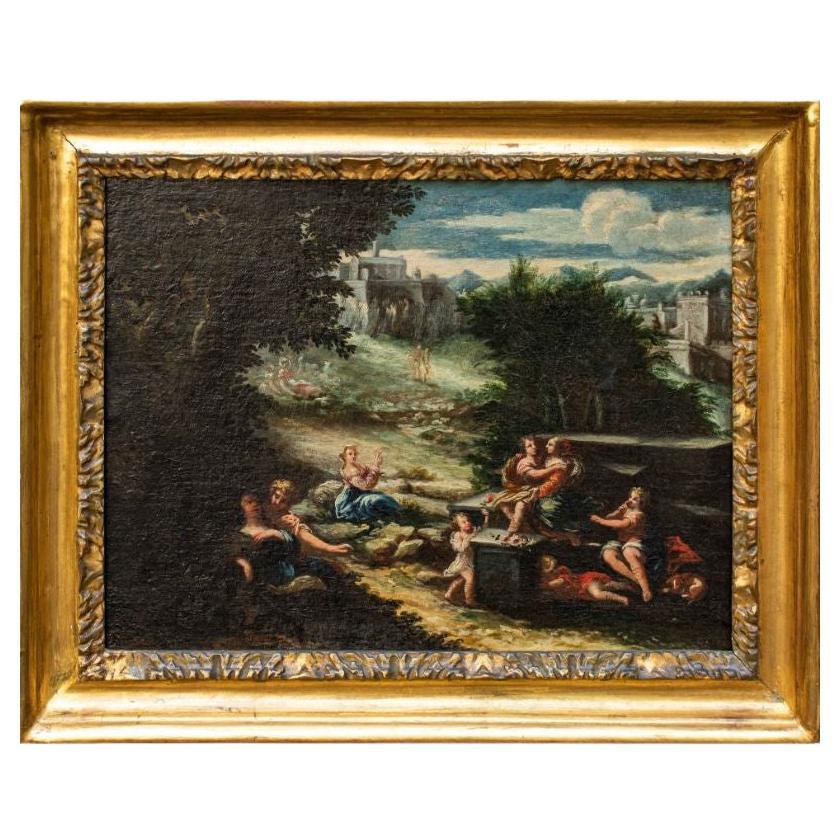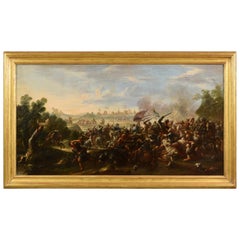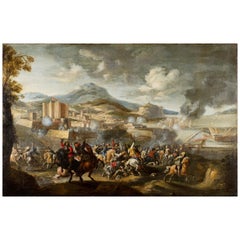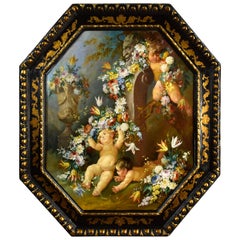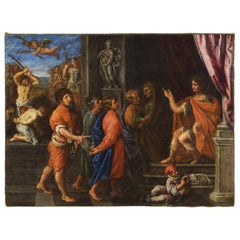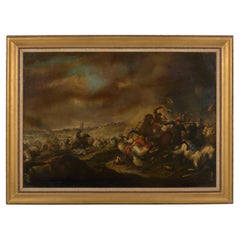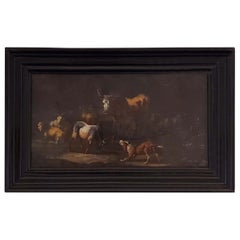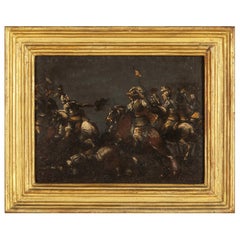
17th Century, Italian Oil on Slate Painting with A Cavalry Battle Scene
View Similar Items
Want more images or videos?
Request additional images or videos from the seller
1 of 11
17th Century, Italian Oil on Slate Painting with A Cavalry Battle Scene
$10,038.97List Price
About the Item
- Dimensions:Height: 9.45 in (24 cm)Width: 11.82 in (30 cm)Depth: 0.79 in (2 cm)
- Style:Baroque (Of the Period)
- Materials and Techniques:
- Place of Origin:
- Period:Mid-17th Century
- Date of Manufacture:Mid-17th Century
- Condition:
- Seller Location:IT
- Reference Number:1stDibs: LU4405217612212
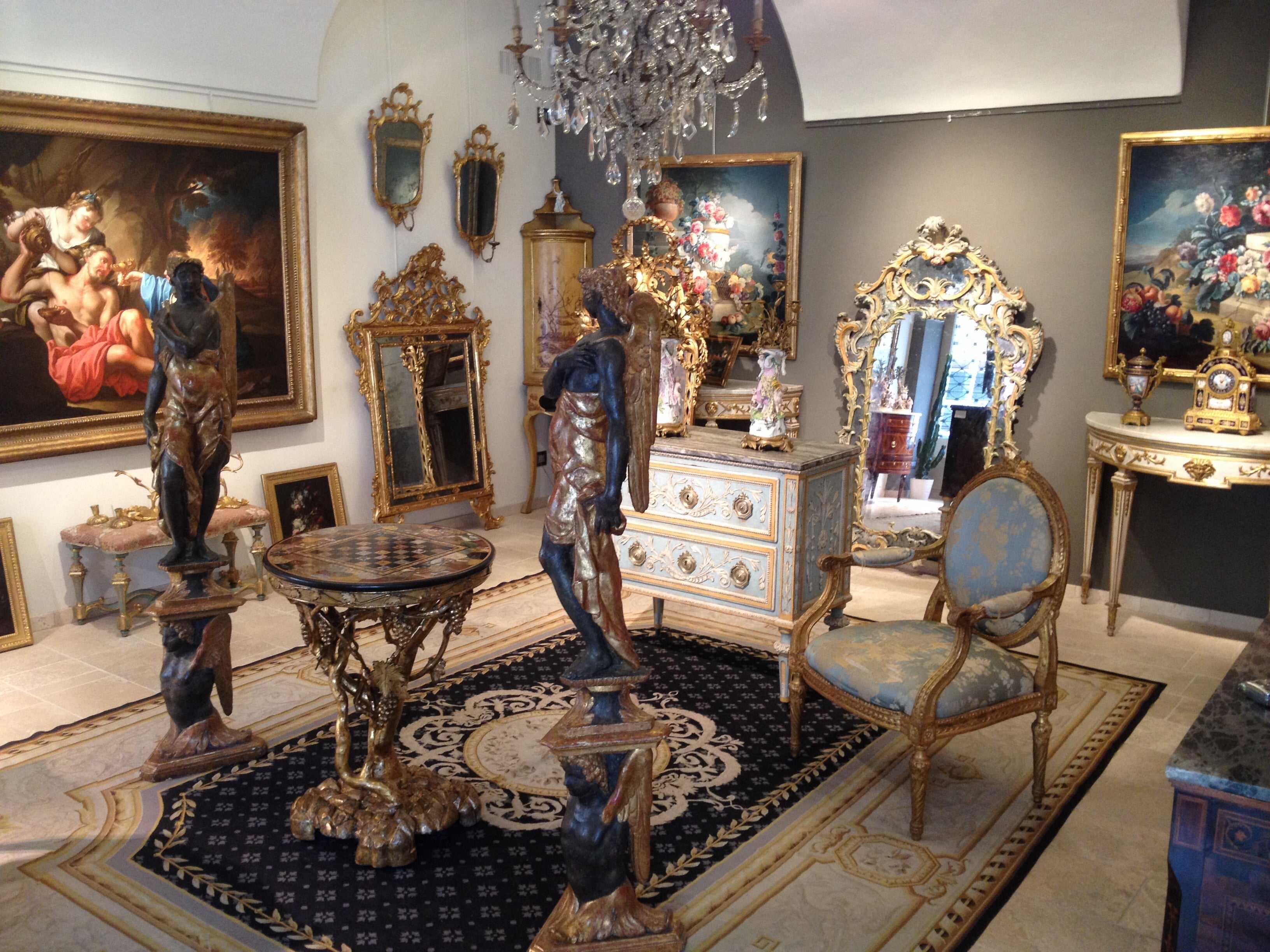
About the Seller
5.0
Platinum Seller
Premium sellers with a 4.7+ rating and 24-hour response times
Established in 1980
1stDibs seller since 2019
56 sales on 1stDibs
Authenticity Guarantee
In the unlikely event there’s an issue with an item’s authenticity, contact us within 1 year for a full refund. DetailsMoney-Back Guarantee
If your item is not as described, is damaged in transit, or does not arrive, contact us within 7 days for a full refund. Details24-Hour Cancellation
You have a 24-hour grace period in which to reconsider your purchase, with no questions asked.Vetted Professional Sellers
Our world-class sellers must adhere to strict standards for service and quality, maintaining the integrity of our listings.Price-Match Guarantee
If you find that a seller listed the same item for a lower price elsewhere, we’ll match it.Trusted Global Delivery
Our best-in-class carrier network provides specialized shipping options worldwide, including custom delivery.More From This Seller
View All17th Century, Italian Painting with Battle Between Christian and Turkish Cavalry
Located in IT
17th century, Italian oil on canvas painting with battle between Christian and Turkish cavalry
The oil on canvas painting depicts a battle between Christian and Turkish cavalry. C...
Category
Antique Mid-17th Century European Baroque Paintings
Materials
Canvas
17th Century, Italian Painting with Battle attributed to Marzio Masturzo
Located in IT
Marzio Masturzo, attributed (Active in Italy - in Naples and Rome- in the second half of the 17th century)
"Battle between cavalry and vessels with fortified city on the left"
...
Category
Antique Late 17th Century Italian Baroque Paintings
Materials
Canvas
$39,860 Sale Price
25% Off
19th Century, Italian Painting with Still Life with Cherubs
Located in IT
19th century Roman painter
Still life with cherubs, flower festoons and herma with faun
Measures: Oil on canvas, cm H 78 x W 95 without frame
Cm H 122.00 x W 106 x D 8 with frame.
The work, painted in oil on canvas, octagonal in shape, represents a nature with three putti or cupids playing with flower festoons in a wooded environment in which is placed a herma with faun and, on the left, a large neoclassical marble vase...
Category
Antique 19th Century Italian Baroque Paintings
Materials
Canvas
17th Century, The Martyrdom of the Four Crowned Saints by Giuliano Dinarelli
By Carlo Piacenza
Located in IT
17th century, The condemnation and martyrdom of the four crowned saints by Giuliano Dinarelli
Mid-17th century, Italy, Bologna
Oil on canvas, frame ...
Category
Antique Mid-17th Century Italian Baroque Paintings
Materials
Canvas
17th Century, Pair of Italian Ink Drawings on Paper with Studies for Grotesques
Located in IT
17th century, pair of ink drawings on paper with studies for grotesques, friezes and helmets.
Painter of central Italy of the 17th century, signed with monogram “A.M.”.
Measurements: cm L 45.5 x H 59.5 x 5.5; cm 22 x 33 / cm L 46.5 x H 59 x 5.5; cm 22.5 x 31.5
The pair of sheets, in good condition, is framed by antique frames in carved and gilded wood. They show some china studies with some studies for different subjects. Specifically, the first sheet represents the design of a frieze of Renaissance taste under which are some studies probably referring to a family coat of arms. Below the center is a monogram “A.M.”.
The sheet is also worked on the back in which are drawn some articulated elements of decoration in the style of the Renaissance grotesque...
Category
Antique 17th Century Italian Baroque Drawings
Materials
Paper
18th Century Italian Oil on Canvas Painting with Battle by Antonio Calza
By Antonio Calza
Located in IT
Antonio Calza (Italy, Verona, 1653-18th April 1725)
"Battle between Christian and Turkish cavalry with castle"
The painting depicts a bloody battle between Christian and Turkish cavalry. Characterized by dynamism, intensity of color and light, the main scene occupies the lower horizontal section of the canvas, optically interrupted by the black fumes of the shots from which emerge, on the left, the towers of a fortress. On the right, in the distance you can see the combat in progress in the countryside, beyond which you can see the pale presence of hills that create a fifth, marking the horizon. To frame the scene contributes to the left, against light and in the foreground, a portion of the wall. The painter, however, introduces a horse on the ground, of which we see only the back, a ruse to involve the observer making him become active and participate in the scene. In the foreground, lifeless bodies, wounded horses and, scattered on the ground, weapons and a drum enhance the drama of the clash.
The excitement and expressive force, the intense chromatic range attentive to the conditions of light and the fine brushstrokes, decisive and dramatic, suggests the attribution to Antonio Calza, one of the most important painters of battles of the seventeenth century, excellent student and continuator of the greatest interpreter of the genre, Jacques Courtois called il Borgognone (Saint-Hyppolite 1621 - Rome 1676). Il Borgognone, although not having had a real school or direct students, places itself as a primary reference point by the Italian and foreign "battaglisti".
The genre of battle painting found great success in the collections of the Italian and European nobility of the seventeenth and eighteenth centuries. The battles of the Italian Renaissance, in which the scene converged towards a precise protagonist, evolve towards a type of combat "without hero". The bloody realism of the details and the dynamic development of the narrative confuse the figure of the protagonist, when present, to give importance to the swirl of horses and armed fighters, among which, moreover, does not emerge a winner.
The certain documents relating to the life and movements of Antonio Calza are scarce; it was equally difficult to reconstruct, from the critics, a catalogue of autograph works. Through paintings in private collections, in museums and paintings passed on the antiques market it has been possible to identify a copious corpus of works that can be traced back to his hand. The work of art historians, together with that of antique dealers, in conferring proper attributions in order to best outline the figure of Calza, continues but studies are still in progress. In this sense, the work of Giancarlo Sestieri should certainly be noted, who investigated the artistic production of the battaglisti and Calza, thus allowing the comparison of the numerous photographic works reported, to identify and recognize the stylistic qualities that distinguish the corpus of paintings assigned to him today.
Antonio Calza was born in 1653 in Italy, in Verona and in 1664 he entered the school of Carlo Cignani in Bologna, dedicating himself to painting battles and landscapes. He then perfected in Rome, where he knew the works of the then undisputed head of the sector, Jacques Courtois called the Burgundian. In 1675 he returned to Verona and married an 88-year-old widow who, dying, left him a rich inheritance. Much appreciated by the nobility and the bourgeoisie, he received numerous commissions. Bartolomeo Dal Pozzo (Le Vite de' pittori, de gli scultori et architetti veronesi, 1718) praises "three great paintings of battles...
Category
Antique Late 17th Century Italian Baroque Paintings
Materials
Canvas
You May Also Like
A Late 17th Century Painting Depicting A Cavalry Battle
Located in ARMADALE, VIC
A Late 17th Century Painting Depicting A Cavalry Battle
Height: 115 cm Width: 75 cm Depth: 6 cm.
Provenance: Private Australian Collection.
Category
Antique Late 17th Century Italian Baroque Paintings
Materials
Canvas
17th Century Old Master Painting, Large Battle Scene, Oil on Canvas
Located in Bradenton, FL
17th Century Large Old Master Battle Scene Painting. Flemish School, circa 1610 - 1680. Oil on canvas painting depicts a dynamic battle scene fi...
Category
Antique 17th Century Dutch Baroque Paintings
Materials
Canvas
Neapolitan school, 17th century, battle scenes
Located in Milan, IT
Neapolitan School of the 17th Century
Battle scenes between Christians and Turks
(2) Oil on canvas, 52 x 71 cm
Framed, 61 x 80 cm
One genre that met with wide acclaim in seventeenth-century Neapolitan painting and flattering success among collectors was that of battle. The Parthenopean nobility loved to adorn the walls of their salons with battles depicting single acts of heroism or complex combats that exalted patriotism and warlike prowess, virtues with which members of the wealthy aristocracy of the time liked to identify.
The Church, in the Neapolitan area, was also at the forefront of commissions, commissioning artists to depict the spectacular triumphs of Christendom over the infidels, such as the memorable naval battle of Lepanto in 1571, which marked a historical turning point with the great victory over the Turks, becoming a repeated iconographic motif imbued with devotional value, replicated several times through the interest of the Dominican order, which was very devoted to Our Lady of the Rosary, who benevolently followed earthly events from above in heaven. Other themes dear to the Church within the genre were drawn from the Old and New Testaments, such as Constantine's Victory at the Milvian Bridge or St. James at the Battle of Clodius.
Among the leading Neapolitan artists of that period, several specialized in battle scenes: these include Francesco Graziani, known as Ciccio Napoletano, a battler active between Naples and Rome in the second half of the 17th century; Andrea De Lione, who lived in Naples from 1610 to 1685, a versatile narrator of battles without heroes, of horsemen assaulting or retreating, and of profane scenes immersed in a wild and primordial, yet already classicized, nature; and Carlo Coppola. The latter was active for more than twenty years, from 1640 to 1665, and his catalog, which is interesting because it bears witness to a particular historical moment and the tastes of private patrons, has yet to be defined, although many of his works are initialed. It is precisely to Coppola's corpus that these two paintings could come close: with the production of the Neapolitan battler the two paintings seem to share the smoky colors, the accentuated chiaroscuro and the marked dynamism of the scenes. Moreover, it is necessary to mention how that of the battle between Christians and Turks was an absolutely central theme in Coppola's pictorial production. Also close to the manner of the two paintings analyzed here is the production of one of Coppola's most celebrated pupils, Giovanni Luigi Rocco...
Category
Antique 17th Century Italian Other Paintings
Materials
Canvas
$9,212 / set
17th Century Rosa di Tivoli Painting on Slate
By Philipp Peter Roos (Rosa di Tivoli)
Located in New York, NY
A ram lowers its horns in a face off with a barking dog that rises on its haunches. An ox turns its head to watch the row. An annoyed ewe glances over its shoulder, but the two behin...
Category
Antique 1680s Italian Baroque Paintings
Materials
Slate
17th Century Oil on Canvas Italian Biblical Scene Painting, 1670
Located in Vicoforte, Piedmont
Antique Italian painting from the 17th century. Oil on canvas artwork, first canvas, depicting a biblical subject, King David admonished by the prophet Nathan, of good pictorial qual...
Category
Antique 1670s Italian Paintings
Materials
Canvas
Italian Francesco or Pietro Graziani Neapolitan battle scene, 17th/18th Century
Located in CH
Italian Francesco or Pietro Graziani Neapolitan battle scene, 17th/18th Century
This battle scene is attributable to one of the two Graziani ( Francesco or Pietro) battle scene pain...
Category
Antique Late 17th Century Italian Baroque Paintings
Materials
Canvas
Recently Viewed
View AllMore Ways To Browse
Archangel Raphael
Grand Tour Gouache
J Dubois Painting
Jean Marc Louis
King Ludwig Ii
Porcelain Plaque Religious
Scott Kerr
The Village Voice
Used Furniture Croydon
Used Furniture Reading Pa
Verre Eglomise Painting
Wagner Plaque
Women Naked Painting
After Murillo
American Federal Portrait
Antique Furniture Islington
Boy Hoop
Gordon Roberts
